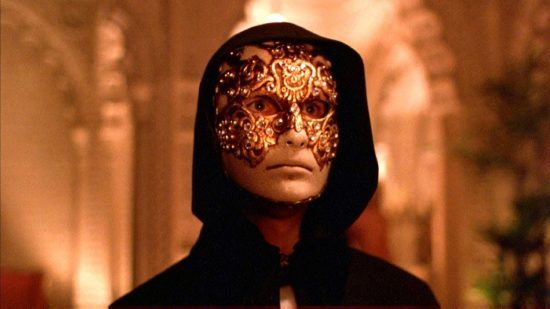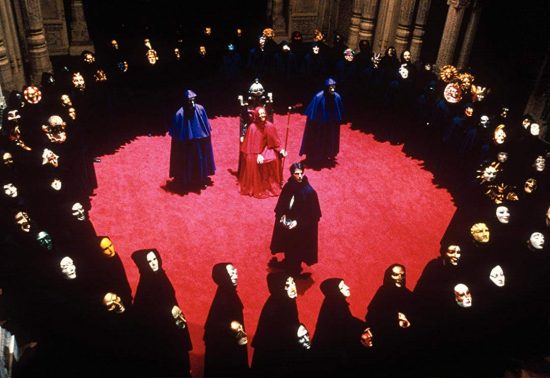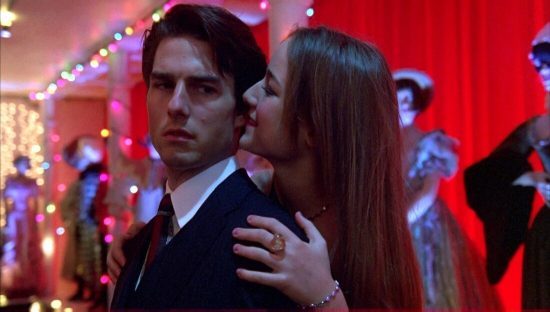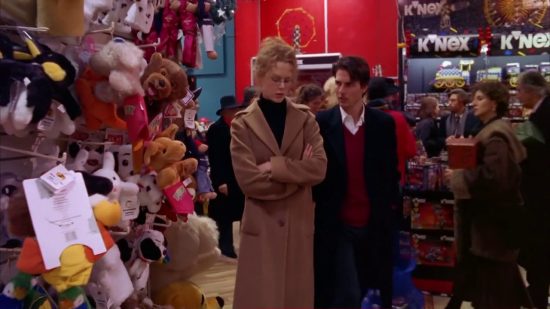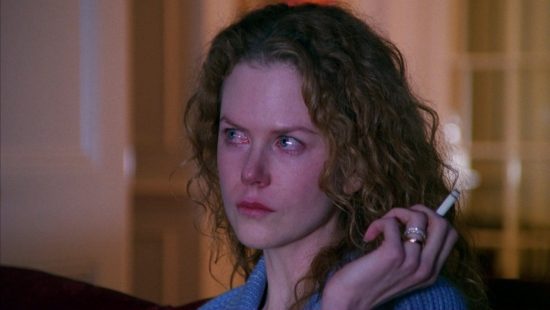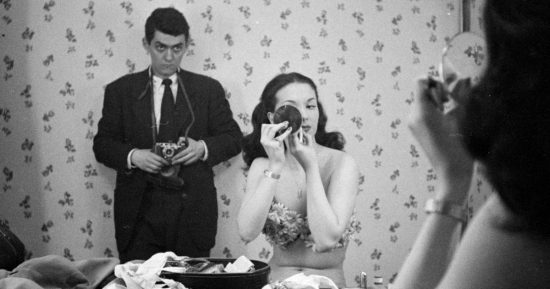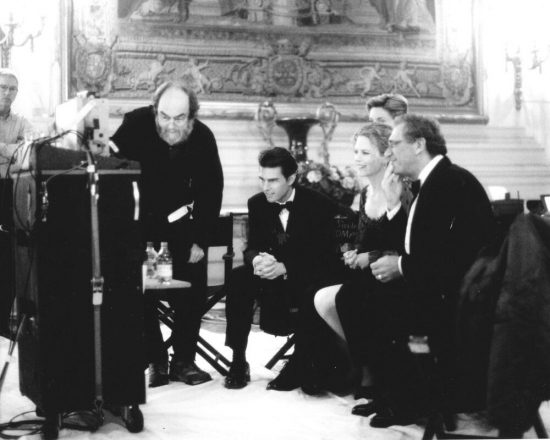Stanley KuBLOG: Eyes Wide Shut – A Stanley Kubrick Retrospective
Eyes Wide Shut opened at the Venice Film Festival and was the last film I saw in England before I moved to Italy in 1999. I saw it again in a packed house in Italy in Italian. As the posthumous last film of Stanley Kubrick it carried a weight of expectation and the casting of Tom Cruise and Nicole Kidman, the power couple of the nineties, excited whole demographics. Rumours about the film’s scandalous sex scenes, from orgies to necrophilia according to some reports, also raised temperatures among audiences and critics alike. How could we not be disappointed? How could we not be more wrong?
It’s important to ask the question after over twenty years have passed: what exactly is Eyes Wide Shut? The first thing that was obvious on its release was what the film was not. It wasn’t the ‘sexiest film ever made’, nor was it a typical Tom Cruise picture. Or Cruise/Kidman for that matter – their previous two pairings had been Ron Howard’s Far and Away and Tony Scott’s Days of Thunder, both popcorn selling crowd-pleasers. Nor was it whatever a Kubrick film was supposed to be. Except that of course, it was. Because like all his films, Eyes Wide Shut was a departure, an exploration into new territory and new genres. What it was then, dragging ourselves from the brambles of negatives, was an adaptation of Arthur Schnitzler’s Traumnovelle transposed to modern-day New York. Dr. Bill Harford (Tom Cruise) is a well to do medical practitioner with a beautiful wife Alice (Nicole Kidman) and child and a glorious apartment. He wears three-piece suits and attends high society functions. At the Christmas party of Victor Ziegler (Sydney Pollack), he helps his host out of a tough spot when a prostitute he is with overdoses. A couple of days later during a stoned argument, Alice recounts a fantasy she had of having sex with another man, to prove to Bill his sexist naivete when it comes to women, jealousy and desire. Called away to attend the deathbed of a patient, he embarks on a night journey in which he will have several quasi-sexual encounters. Bill gets an erection, grins goofily, then wilts at the arrival of some unforeseen bucket of reality.
So Eyes Wide Shut is essentially a comedy: a sequence of bathetic moments about a man who literally cannot get fucked in an orgy. He is propositioned by the grieving daughter of his dead patient and before he can close his mouth her boyfriend turns up. He falls in with a prostitute – an Introduction to Sociology is propped prominently on her bookshelf – but then his wife rings. He gatecrashes an orgy but is found out and humiliated. Every turn he takes leads him deeper into a maze of dissatisfaction and paranoia. Sex appears to be everywhere. There are paedophiles in the costume shop; come-ons from the hotel receptionist; even the morgue has a moment where there appear to be two stiffies in the room. The comedy comes in Bill’s apparent ineptness. This successful, attractive man is a boy lost in the woods, who comes to believe he is in the middle of a dark conspiracy. The dangers come with people following him, outright threats, the discovery of the prostitute having HIV and the anxiety that his wife – whose extramarital desire torments him in dodgy Red Shoe Diaries flashbacks – might find out what he’s up to.
In Bill’s predicament, it also clear that Eyes Wide Shut is a neo-noir. From The Blue Angel on, film noir has often tracked the downfall of middle-class men at the hands of sexually powerful women. Everything that happens to Bill is instigated by Alice and her revelation of how fragile their marriage actually is. Alice occupies the double role of traditional wife and mother – she doesn’t appear to have a job – and that of the sexually dangerous femme fatale. She pulls the strings. Her flirtation with a Hungarian lothario at the party shows that she has an eye that wanders as easily as her husband’s. She seems unsatisfied in her marriage. She drinks, smokes pot, looks bored. Her argument with Bill insists that she has an interiority he has little or no access to. She is both his wife and the other woman. When he returns from the orgy, she recounts a dream in which she seems to be participating in the orgy he singularly failed to join. The revelation revels in Bill’s humiliation at his hands even as she embraces him and soothes him. Does she know what she’s doing? Did she sneak out to the orgy herself? Is she having an affair with Ziegler? Is Bill trapped in his own nightmare or in his wife’s fantasy?
In the end, Bill will return to his wife, confess all, surrender to her completely. They will wander around a toy store the same way they wandered through Ziegler’s party, the same way they wandered through the orgy, both meandering and intent: like the film itself. Alice delivers a final affirmative line, like Molly Bloom in James Joyce’s Ulysses, saying a final yes to the world and the universe. A promise of reconnection, but one which is again tantalisingly going to happen off-screen.
Stanley Kubrick delivered a cut of the film to Kidman and Cruise so they could sign off on the nude scenes and to Warner Brothers. According to most witnesses, he was happy with the film, pleased with the reaction and some have even stated he thought it was his masterpiece. A couple of people – Lee Emery among them – recount a different version, with Kubrick unsatisfied and worried. Both stories could easily be true. It is not uncommon for an artist on the completion of a work to be both elated and apprehensive, deflated and triumphant. A bit like Bill in the movie. He died six days after delivering the film. His eyes were now properly wide shut. It is almost certain that he would have continued tweaking the film prior to its release and my guess would be that some of the scenes would have been tightened. There are moments like the scene with Ziegler and Bill that could do with some thinning. It’s difficult to tell because the dreamlike elements can cover some pacing issues. Also, it is likely the soundtrack would have changed, though here it is impossible to guess.
Whether Eyes Wide Shut represents Kubrick’s masterpiece is likewise impossible to say. Having now watched all of his feature films from beginning to end, Eyes Wide Shut appears typical in its atypicality. A sui generis both in his filmography and in film generally, it is an idiosyncratic but deeply rewarding work. Very funny, disturbing and occasionally moving. It’s also a deeply human work from a man who was constantly delving into what exactly it meant to be human. The Christmas time setting adds a visual warmth but also a childlike yearning for the cosiness of the hearth, the embrace of unconditional love in a world that is cold and full of danger. I hope you have enjoyed this blog as much as I’ve enjoyed rewatching the films and writing on them.

